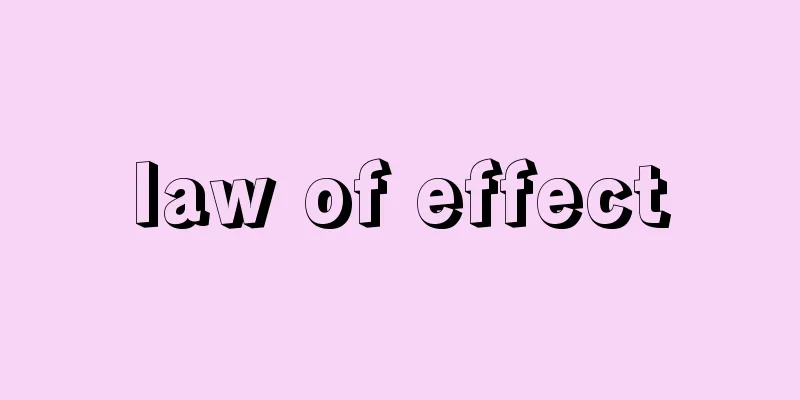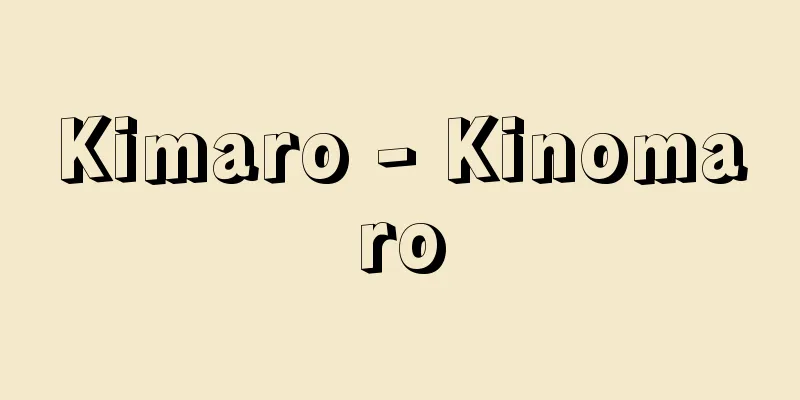Pharmacopoeia - yakkyokuho (English spelling) pharmacopoeia

|
It is a set of standards for quality, purity, and strength for important medical drugs to ensure their proper properties and quality. It is also called pharmacopoeias, and many are established by a country or an equivalent organization. Some are established jointly by several countries. Examples are the European Pharmacopoeia (EP) and the International Pharmacopoeia (IP). The EP was published in 1969 as a compilation of standards and testing methods commonly used among the member states of the Council of Europe (EC). The IP was established by the World Health Organization (WHO) for pharmaceutical quality control in developing countries where laws and facilities and technology are not yet established, and the first edition was published in 1951. Countries that have their own pharmacopoeias include Japan, 9 Asian countries, 1 Middle Eastern country, 1 African country, 24 European countries, and 1 North American country (according to the 15th Revised Japanese Pharmacopoeia Commentary, edited by the Japanese Pharmacopoeia Commentary Editorial Committee). [Fumiji Koho] historyThe history of pharmacopoeias began in Europe. At the time, doctors had a monopoly on dispensing medicines, while medicines were manufactured solely for profit by businesses with questionable expertise. In 1240, Holy Roman Emperor Frederick II, with the help of the merchant guilds, promulgated a law prohibiting doctors from selling medicines in order to ensure proper treatment, and established a system of separation of medical and pharmaceutical roles. This made it mandatory for pharmacists with medical knowledge to dispense medicines prescribed by doctors in pharmacies. As this system spread throughout Europe, the concept of official prescriptions (pharmacopoeias) to guarantee the quality of medicines sold in pharmacies inevitably emerged, and in 1498, the Pharmacists' Association of Florence, Italy, published a private prescription book called "Ricettorio." Next, in 1546, the city of Nuremberg in Germany published the official pharmacopoeia "Dispensatorium", and in 1618 King James I of England published the London Pharmacopoea "Pharmacopoea Londinensis", followed by the Leiden Pharmacopoea "Pharmacopoea Leidensis" in the Netherlands in 1770, followed by the Amsterdam Pharmacopoeia in 1792, the Batavia Pharmacopoeia in 1805, and the Rotterdam Pharmacopoeia, etc. All of these were city pharmacopoeias and only covered limited areas, but it is true that they promoted the publication of national pharmacopoeias established by the country. The first national pharmacopoeia was the Danish Pharmacopoea "Pharmacopoea Danica", published in 1772. The Japanese Pharmacopoeia was the 21st in the world to be published. The Japanese term "pharmacopoeia" is said to have originated from the Dutch medicine doctor Nakagawa Junan's "Oranda (Holland) Kakuho" (Dutch Pharmaceutical Medicine) of the Edo period, who translated "Pharmacopoea" as "pharmacopoeia." The name itself is said to have originated from the medical prescription book "Taihei Keimin Wazai Kakuho" (commonly known as "Wazai Kakuho"), which was introduced from China (Song Dynasty) in the late Heian period. [Fumiji Koho] Japanese PharmacopoeiaIn the early Meiji period, with the rapid adoption of Western culture, medical care also underwent a major shift from traditional Chinese medicine to Western medicine, and a large amount of Western medicine was imported to replace herbal medicines. However, the effects of these medicines were strong, and the risk to the human body increased due to the uneven quality. Furthermore, the number of imported Western medicines was increasing, including inferior and counterfeit goods. This led to the establishment of a pharmaceutical office (the precursor to the National Institute of Health Sciences) to crack down on this, and the establishment of prescriptions to serve as standards for pharmaceutical testing. First, the Tokyo Pharmaceutical Office (Nihonbashi Bakuro-cho) was established on March 27, 1874 (Meiji 7), the Kyoto Pharmaceutical Office on February 15, 1875, and the Osaka Pharmaceutical Office on March 24 of the same year, but the Kyoto Pharmaceutical Office was abolished after a year and a half (August 1876), and new pharmaceutical offices were established in Yokohama and Nagasaki in its place. At that time, the pharmaceutical offices were supervised by foreign teachers, and pharmaceutical education was conducted in addition to drug testing. In order to establish Japan's first pharmacopoeia that specified the quality of pharmaceuticals, the Ministry of Home Affairs asked Anton Geerts (commonly known as Geerts in Japan) of the Kyoto Pharmacy Office and BW Dwars of the Osaka Pharmacy Office to prepare a draft of the Japanese Pharmacopoeia in 1875. Geerts was the main author of this draft, and it was completed in December 1877. Geerts focused on the Dutch Pharmacopoeia, and also referred to the German Pharmacopoeia, French Pharmacopoeia, British Pharmacopoeia, and American Pharmacopoeia. Later, in 1879, the Central Hygiene Council (chaired by Nagayo Sensai) was established in the Ministry of Home Affairs, and on October 6, 1880, Minister of Home Affairs Matsukata Masayoshi submitted a petition for the selection of the Japanese Pharmacopoeia to the Grand Minister of State Sanjo Sanetomi, and on November 5 of the same year, the Grand Council of State approved the selection. Thus, the members of the pharmacopoeia compilation committee were Takagi Kanehiro (Kenkan), then Navy Medical Superintendent, Nagamatsu Tokai (1840-98), Army Pharmacist and Second Class Military Surgeon, Shibata Shokei, a member of the Health Bureau, Heertz, a pharmacy instructor, Eijkmann JF, and Alexander Langgaard, a professor in the pharmaceutical department of the Faculty of Medicine at the University of Tokyo. Heertz's draft was submitted to the first committee meeting in January 1881, but various circumstances forced it to be revised. Langgaard and Heertz shared the work of drafting the document, but after Langgaard's return to Japan and Heertz's death, Eijkmann revised the German draft manuscript and compiled a new manuscript on his own. The German draft was translated into Japanese, the Japanese manuscript was reviewed as the Japanese Pharmacopoeia proposal, and the three volumes of the Japanese Pharmacopoeia, the Japanese, German, and Latin versions, were submitted to the Minister of Home Affairs on October 13, 1885, completing the compilation, which took more than four years. The first edition of the Japanese Pharmacopoeia was published the following year, June 25, 1886, as an appendix to Official Gazette No. 894, and Home Ministry Order No. 10 stated, "The Japanese Pharmacopoeia Supplement has been established and will come into effect on July 1, 1887." The first edition of the Japanese Pharmacopoeia listed 468 items, including 59 organic medicines, 80 inorganic medicines, 89 herbal medicines, 37 volatile oils, 177 preparations, 19 raw materials for preparations, and 7 sanitary materials. By the way, the 15th revised edition of the Japanese Pharmacopoeia (2006) lists 1,483 items. After the first edition, the Second Edition of the Japanese Pharmacopoeia was published in May 1891 (Meiji 24), the Third Revised Edition of the Japanese Pharmacopoeia in July 1906, the Fourth Revised Edition of the Japanese Pharmacopoeia in December 1920 (Taisho 9), and the Fifth Revised Edition of the Japanese Pharmacopoeia in June 1932 (Showa 7). After that, due to the impact of World War II, there were partial revisions but no complete revisions. After the war, the United States Pharmacopoeia was revised in 1947, which prompted the need to revise the Japanese Pharmacopoeia as well. The Sixth Revised Edition of the Japanese Pharmacopoeia was completed and promulgated on March 1, 1951. Since then, major revisions have been made every 10 years, such as the "Japanese Pharmacopoeia, Seventh Edition" (April 1, 1961) and the "Japanese Pharmacopoeia, Eighth Edition" (April 1, 1971). Since the "Japanese Pharmacopoeia, Ninth Edition" (April 1, 1976), revisions have been made every 5 years, and the following have been promulgated: the "Japanese Pharmacopoeia, Tenth Edition" (April 1, 1981), the "Japanese Pharmacopoeia, Eleventh Edition" (April 1, 1986), the "Japanese Pharmacopoeia, Twelfth Edition" (April 1991), the "Japanese Pharmacopoeia, Thirteenth Edition" (April 1996), the "Japanese Pharmacopoeia, Fourteenth Edition" (April 1, 2001), and the "Japanese Pharmacopoeia, Fifteenth Edition" (April 1, 2006). At the time of the publication of the 6th Revised Japanese Pharmacopoeia, in addition to the 2nd Revised National Formulary, the 6th Revised Japanese Pharmacopoeia was also included as an official compendium. In 1960, the Pharmaceutical Affairs Act (currently the Pharmaceutical Affairs Law) established the 6th Revised Japanese Pharmacopoeia and the 2nd Revised National Formulary were deemed to be the 1st and 2nd Parts of the Japanese Pharmacopoeia, respectively, and they continued to be the 1st and 2nd Parts of the Japanese Pharmacopoeia from the 7th Revised Japanese Pharmacopoeia to the 14th Revised Japanese Pharmacopoeia. In the 14th Revised Japanese Pharmacopoeia, the 1st Part contained General Provisions, General Provisions for Preparations, General Testing Methods, and the 1st Part Drug Articles, and the 2nd Part contained General Provisions for Crude Drugs, General Provisions for Preparations, General Testing Methods, and the 2nd Part Drug Articles, as well as Reference Ultraviolet-Visible Absorption Spectra, Part 1, Part 2, and Reference Information. The Pharmaceutical Affairs Law states that "Part 1 mainly contains commonly used pharmaceutical ingredients and basic preparations, and Part 2 mainly contains mixed preparations and their pharmaceutical ingredients." In the first part, The Japanese Pharmacopoeia is characterized as a standard book, but also as a guide for the manufacture and use of pharmaceuticals. On the other hand, there are requests from users for each drug monograph to include information such as precautions for dispensing or handling, but at present the Japanese Pharmacopoeia is used as an official document in the form of a standard book, and a separate publication, "JPDI Japanese Pharmacopoeia Drug Information 2006," has been published. As pharmaceuticals became increasingly internationalized, the Pharmacopoeial Discussion Group (PDG) was established in 1989 by people involved with the three pharmacopoeias, namely the Japanese Pharmacopoeia, the United States Pharmacopoeia, and the European Pharmacopoeia, with the aim of harmonizing their standards for testing methods and monographs on pharmaceutical excipients. The results of this work are reflected in the Japanese Pharmacopoeia. [Fumiji Koho] "The Japanese Pharmacopoeia, 14th Edition, edited by the Japanese Compendium Association (2001, Jiho)" ▽ "The Japanese Pharmacopoeia Commentary Editorial Committee, 14th Edition, Provisions and Commentaries of the Japanese Pharmacopoeia (2001, Hirokawa Shoten)" ▽ "The Japanese Pharmacopoeia Commentary Editorial Committee, 15th Edition, Commentary of the Japanese Pharmacopoeia (2006, Hirokawa Shoten)" [Reference items] | pharmaceutical functions| | | | | | |Source: Shogakukan Encyclopedia Nipponica About Encyclopedia Nipponica Information | Legend |
|
医療に供する重要な医薬品について、その性状および品質の適正を図るため、品質、純度および強度の基準を定めたものである。単に局方ともいい、国またはこれに準ずる機関によって制定されたものが多い。また、1国だけでなく数か国共同で制定されたものもある。ヨーロッパ薬局方(EP)、国際薬局方(IP)がその例で、EPは欧州評議会(EC)加盟国間で共通して使用される規格と試験法がまとめられ1969年刊行された。IPは、法の未整備や設備・技術が十分でない発展途上国の医薬品品質管理のため世界保健機関(WHO)が制定しているもので、1951年初版が発行された。独自の薬局方を制定している国には、日本をはじめアジア9か国、中東1か国、アフリカ1か国、ヨーロッパ24か国、北アメリカ1か国(日本薬局方解説書編集委員会編『第十五改正 日本薬局方解説書』による)がある。 [幸保文治] 歴史薬局方の歴史はヨーロッパから始まった。神聖ローマ皇帝フリードリヒ2世は商人ギルドの働きかけもあって、当時医師が調剤を独占し、一方、薬は専門知識の疑わしい業者が利益のみを追求して製造されていた状況から、正しい治療を行うために医師の売薬を禁ずる法律を1240年に公布し、医薬分業制度を確立した。これにより、薬学知識を修めた薬剤師が薬局で医師の処方によって調剤を行うことが義務づけられた。この制度がヨーロッパに浸透するにしたがい、薬局で販売する医薬品の品質を保証する公定処方書(薬局方)の概念が必然的に発生し、1498年イタリアのフィレンツェの薬剤師協会が私的処方書である『Ricettorio』を発行した。続いて1546年ドイツのニュルンベルク市は公定の薬局方『Dispensatorium』を発行、また1618年にはイングランド王ジェームズ1世がロンドン薬局方『Pharmacopoea Londinensis』を、さらにオランダにおいて1770年ライデン薬局方『Pharmacopoea Leidensis』が発行され、引き続き1792年アムステルダム薬局方、1805年バタビア薬局方、ロッテルダム薬局方などが発行された。これらはすべて都市薬局方であり、限定された地域のみを対象としたものであるが、国で定める国定薬局方の発行を促進したことは事実である。 国定薬局方の最初は1772年に発行されたデンマークの薬局方『Pharmacopoea Danica』である。日本薬局方は世界で第21番目の刊行である。 日本語の局方という名称は、江戸時代の蘭方(らんぽう)医中川淳庵(じゅんあん)著『和蘭(オランダ)局方』がオランダのライデン薬局方の最初の訳書といわれ、淳庵がPharmacopoeaを局方と訳した。また、局方そのものは平安時代末期に中国(宋(そう))より渡来した医方書『太平恵民和剤局方』(通称『和剤局方』)によったと伝えられている。 [幸保文治] 日本薬局方明治初期、欧米文化の急速な摂取に伴い医療も従来の漢方医学から西洋医学へと大きな転換が行われ、漢方生薬(しょうやく)にかわって洋薬が大量輸入された。しかし、その作用が激しく、品質の不均一による人体への危険性が増大し、さらに輸入洋薬に粗悪品や贋造(がんぞう)品(偽物)が多くなり、これを取り締まるための司薬場(国立医薬品食品衛生研究所の前身)の設置と医薬品試験の基準となるべき方書の制定が望まれた。まず、1874年(明治7)3月27日東京司薬場(日本橋馬喰(ばくろ)町)、75年2月15日京都司薬場、同年3月24日大阪司薬場が発足したが、京都司薬場は1年半で廃止(76年8月)され、かわって横浜と長崎に司薬場が新設された。当時、司薬場の監督は外国人教師が担当し、薬品試験と同時に薬学教育も行われた。そして医薬品の品質を規定した日本最初の薬局方を制定するため、1875年、当時の京都司薬場のヘールツ(日本の通称ゲールツ)Anton Geertsと大阪司薬場のドワルスB. W. Dwarsの両人に日本薬局方草案の作成が内務省より依頼された。この草案はヘールツが主体となって作成され、1877年12月に完成している。ヘールツはオランダ薬局方を中心にして、ドイツ薬局方、フランス薬局方、イギリス薬局方、アメリカ薬局方などを参照している。その後、1879年内務省に中央衛生会(会長長与(ながよ)専斎)が設置されたのを機に、80年10月6日内務卿(きょう)松方正義(まさよし)が日本薬局方選定の儀を太政(だじょう)大臣三条実美(さねとみ)に上申し、同年11月5日に太政官より聴許を得た。かくして薬局方編纂(へんさん)委員として、当時の海軍中医監高木兼寛(かねひろ/けんかん)、陸軍薬剤正兼二等軍医永松東海(1840―98)、衛生局員柴田承桂(しばたしょうけい)、司薬場教師ヘールツ、同エイクマンJ. F. Eijkmann、東京大学医学部製薬学科教師ランガルトAlexander Langgaardらが選ばれた。ヘールツの草案は1881年1月の第1回委員会に提出されたが、諸般の事情により改訂を余儀なくされた。その後、ランガルトとヘールツが分担して起草したが、ランガルトの帰国とヘールツの没後はエイクマンがドイツ語の起草原稿の修正と新原稿を独自にまとめた。ドイツ語の草稿を日本語に訳し、日本語稿本を日本薬局方案として審議し、1885年10月13日に日本薬局方の日本文、ドイツ文、ラテン文の3巻を内務卿に提出して、4年余を費やした編纂を終わった。この『日本薬局方』初版は翌1886年6月25日、官報第894号付録として発行され、内務省令第10号で「日本薬局方別冊ノ通リ創定シ明治二十年七月一日ヨリ施行ス」となった。 初版『日本薬局方』の収載品目数は468、その内容は有機医薬品59、無機医薬品80、生薬89、油脂揮発油37、製剤177、製剤原料19、衛生材料など7である。ちなみに、『第十五改正日本薬局方』(2006)では収載品目数が1483になっている。 初版以降、『第二版日本薬局方』が1891年(明治24)5月に、『第三改正日本薬局方』が1906年7月に、『第四改正日本薬局方』が1920年(大正9)12月に、『第五改正日本薬局方』が1932年(昭和7)6月に、それぞれ発布された。その後は第二次世界大戦の影響を受け、部分改正はあったものの全面的改正は行われなかった。戦後1947年にアメリカ薬局方が改正され、これを期に日本薬局方も改正の必要に迫られた。そしてできあがったのが『第六改正日本薬局方』で、1951年3月1日公布された。これより『第七改正日本薬局方』(1961年4月1日)、『第八改正日本薬局方』(1971年4月1日)として10年ごとに大改正が行われ、『第九改正日本薬局方』(1976年4月1日)より5年ごとの改正となり、『第十改正日本薬局方』(1981年4月1日)、『第十一改正日本薬局方』(1986年4月1日)、『第十二改正日本薬局方』(1991年4月1日)、『第十三改正日本薬局方』(1996年4月1日)、『第十四改正日本薬局方』(2001年4月1日)、『第十五改正日本薬局方』(2006年4月1日)、が公布されている。 『第六改正日本薬局方』公布当時公定書として日本薬局方のほか、『第二改正国民医薬品集』があり、1960年に新たに制定された薬事方(現、薬事法の基)により『第六改正日本薬局方』および『第二改正国民医薬品集』はそれぞれ日本薬局方第一部および日本薬局方第二部とみなすこととなり、以後、『第七改正日本薬局方』より第一部、第二部として『第十四改正日本薬局方』まで続いた。ちなみに、『第十四改正日本薬局方』では第一部には通則、製剤総則、一般試験法、第一部医薬品各条、第二部には生薬総則、製剤総則、一般試験法、第二部医薬品各条と参照紫外可視吸収スペクトル第一部、同第二部、参考情報が収載されていた。そして、収載品目の内容は薬事法で「第一部には、主として、繁用されている原薬たる医薬品及び基礎的製剤を収め、第二部には、主として、混合製剤及びその原薬たる医薬品を納める」となっている。 第一部には、 薬局方の性格は、規格書であると同時に医薬品の製造および使用に関しての指導書的な面ももっている。一方、医薬品各条に調剤上あるいは取扱い上の留意点などの情報を記載してほしいという使用者側の希望もあるが、日本薬局方は現状では規格書として公的な書という性格で使用されており、別に『JPDI日本薬局方医薬品情報2006』が発行されている。 医薬品の国際化が進むなか、日本薬局方、アメリカ薬局方、ヨーロッパ薬局方の3薬局方の調和を図る目的で、1989年、3薬局方の関係者によって薬局方国際調和会議Pharmacopoeial Discussion Group(PDG)が発足し、試験法や医薬品添加物モノグラフの調和を目ざし活動が開始され、成果が日本薬局方に反映されている。 [幸保文治] 『日本公定書協会監修『第十四改正 日本薬局方』(2001・じほう)』▽『日本薬局方解説書編集委員会編『第十四改正 日本薬局方条文と注釈』(2001・広川書店)』▽『日本薬局方解説書編集委員会編『第十五改正 日本薬局方解説書』(2006・広川書店)』 [参照項目] | | | | | | | |出典 小学館 日本大百科全書(ニッポニカ)日本大百科全書(ニッポニカ)について 情報 | 凡例 |
Recommend
Protective custody - Hogoazukari
A financial institution receives a certain fee to...
Nanda Devi [Mountain] (English spelling)
The highest peak in the Garhwal Himalayas, Uttar P...
Hanahikokin - Kagenkin
…Western music education was being carried out in...
Uchiyamaga Residence
1722‐88 (Kyoho 7‐Tenmei 8) A kyoka poet of the mid...
Hanako (Beggar) - Kashi
In other words, for the people living in cities a...
EC-type value-added tax - EC-type value-added tax
… [Masatoshi Hayashi]. … *Some of the terminology...
clean float
...A type of floating exchange rate system in whi...
Tamame - Gyokujo
[1] 〘Noun〙 ("玉" is a title of beauty)① A...
Isaza - Isaza (English spelling) Lake Biwa goby
A freshwater fish belonging to the family Gobiida...
Schutzbund
… After the war, the Republic of Austria also fac...
Official kiln
Pottery kilns built by political rulers. They are...
systememetrique (English spelling)
…The triangulation survey was completed in 1898, ...
Husayn b. Talāl (English spelling)
On July 20, 1951, King Abd Allah was assassinated...
Cayerina mirabilis (English spelling) Cayerinamirabilis
…The dog beetle, Linguatula taenioides , parasiti...
witchcraft
...In addition, not only in Japan, but in many so...



![Wajiki [town] - Wajiki](/upload/images/67cd41cb4a2c3.webp)





